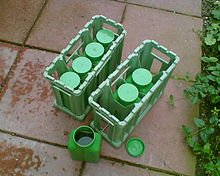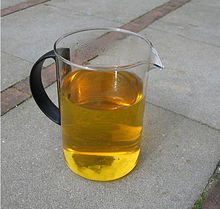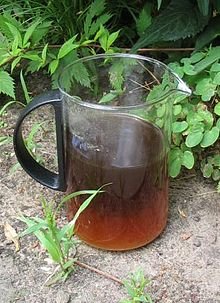
Image Source
What is Urine?
Urine is a liquid by-product of the metabolism in humans and in many animals. Urine flows from the kidneys through the ureters to the urinary bladder. Urination results in urine being excreted from the body through the urethra.
The cellular metabolism generates many by-products which are rich in nitrogen and must be cleared from the bloodstream, such as urea, uric acid, and creatinine. These by-products are expelled from the body during urination, which is the primary method for excreting water-soluble chemicals from the body. A urinalysis can detect nitrogenous wastes of the mammalian body.
Urine has a role in the earth's nitrogen cycle. In balanced ecosystems urine fertilizes the soil and thus helps plants to grow. Therefore, urine can be used as a fertilizer. Some animals use it to mark their territories. Historically, urine was also used for gunpowder production, cleaning, tanning of leather and dyeing of textiles.
Human urine and feces are collectively referred to as human waste or human excreta, and is managed with a sanitation system. Livestock urine and feces also requires proper management if the livestock population density is high.

Image Source
Source of medications
Urine contains proteins and other substances that are useful for medical therapy and are ingredients in many prescription drugs (e.g., Ureacin, Urecholine, Urowave).[citation needed] Urine from postmenopausal women is rich in gonadotropins that can yield follicle stimulating hormone and luteinizing hormone for fertility therapy.One such commercial product is Pergonal.
Urine from pregnant women contains enough human chorionic gonadotropins for commercial extraction and purification to produce hCG medication. Pregnant mare urine is the source of estrogens, namely Premarin.Urine also contains antibodies, which can be used in diagnostic antibody tests for a range of pathogens, including HIV-
Urine to fertilizer
Urine contains large quantities of nitrogen (mostly as urea), as well as reasonable quantities of dissolved potassium. The exact composition of nutrients in urine varies with diet, in particular nitrogen content in urine is related to quantity of protein in the diet. A high protein diet results in high urea levels in urine.
Urine is very high in nitrogen (can be over 10% in a high protein diet), low in phosphorus (1%), and moderate in potassium (2-3%). Urine typically contains 70% of the nitrogen and more than half the potassium found in urban waste water flows, while making up less than 1% of the overall volume. If urine is to be separated and collected for use as a fertiliser in agriculture, then the easiest method of doing so is with sanitation systems that utilise waterless urinals, urine-diverting dry toilets (UDDTs) or urine diversion flush toilets.
Undiluted urine can chemically burn the leaves or roots of some plants, particularly if the soil moisture content is low. For this reason, urine fertilizer is usually applied diluted with water.
When diluted with water (at a 1:5 ratio for container-grown annual crops with fresh growing medium each season or a 1:8 ratio for more general use), it can be applied directly to soil as a fertilizer.

Image Source

Image Source
Thank you for reading
References
When I was young, livestock feces (manure) was used to fertilize crops.
Seriously, I've known a friend in Cebu who drink fresh urine. I wanted to try but I couldn't take it. Nice post @kimph
Hi! I am a robot. I just upvoted you! I found similar content that readers might be interested in:
https://en.wikipedia.org/wiki/Urine